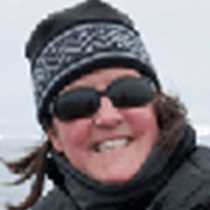Prince Rupert
We have been fortunate to have so many wildlife sightings during our journey so far but today we switched gears just a bit to focus on the rich cultural heritage of this area. Customs agents welcomed us to British Columbia by clearing us into Price Rupert after a peaceful overnight crossing through the Dixon Entrance. There is 10,000 years of First Nations history in this area. We were in the heart of Tsimshain people’s territory and they welcomed us with open arms.
We had a fantastic tour of the Museum of Northern British Columbia which houses stunning artifacts of their ceremonial art. Everyone was given a ticket which divided us into three separate clans. Each clan had to choose a chief as the representative as we heard about the ceremonial regalia when viewing the beautiful artifacts.
We proceeded to the Tsimshain Longhouse for a Winter Feast Performance and the chiefs of each clan were announced upon entering the house. The leader of the Tsimshain Mask dancers, Sam, graciously welcomed all of us as he explained the important role of oral history in their culture. He had such a powerful presence as he danced bowing his head and shaking eagle down feathers from the top of his dramatic headdress as a sign of peace to all who share in this feast.
He explained the names of our assigned clans; Laxgibuu (Wolf), Laxsgiik (Eagle) and Gisbutwada (Killer Whale). The Gisbutwada clan entered the longhouse last and held the place of honor as they are the most revered clan. This Tsimshaian’s clan has a strong association with killer whales.
We were treated to beautiful traditional dances which used intricately carved masks and button blankets. Sam would explain the significance behind each dance and then honored us with a sampling of the traditional food of soap berries and a gift to remind us of this unique experience.
Our morning’s encounter with the Tsimshaian people showed us how closely linked they are to the animals found in this area. It is evident in their tribal names, their artifacts and still woven into their daily lives. During this journey we have seen humpback whales feeding next to the ship; we have kayaked with salmon swimming beneath our kayaks while observing brown bears feasting and today we saw how these animals are part of the very fabric of the Tsimshain culture. It was a day of blessings and appreciation.
We have been fortunate to have so many wildlife sightings during our journey so far but today we switched gears just a bit to focus on the rich cultural heritage of this area. Customs agents welcomed us to British Columbia by clearing us into Price Rupert after a peaceful overnight crossing through the Dixon Entrance. There is 10,000 years of First Nations history in this area. We were in the heart of Tsimshain people’s territory and they welcomed us with open arms.
We had a fantastic tour of the Museum of Northern British Columbia which houses stunning artifacts of their ceremonial art. Everyone was given a ticket which divided us into three separate clans. Each clan had to choose a chief as the representative as we heard about the ceremonial regalia when viewing the beautiful artifacts.
We proceeded to the Tsimshain Longhouse for a Winter Feast Performance and the chiefs of each clan were announced upon entering the house. The leader of the Tsimshain Mask dancers, Sam, graciously welcomed all of us as he explained the important role of oral history in their culture. He had such a powerful presence as he danced bowing his head and shaking eagle down feathers from the top of his dramatic headdress as a sign of peace to all who share in this feast.
He explained the names of our assigned clans; Laxgibuu (Wolf), Laxsgiik (Eagle) and Gisbutwada (Killer Whale). The Gisbutwada clan entered the longhouse last and held the place of honor as they are the most revered clan. This Tsimshaian’s clan has a strong association with killer whales.
We were treated to beautiful traditional dances which used intricately carved masks and button blankets. Sam would explain the significance behind each dance and then honored us with a sampling of the traditional food of soap berries and a gift to remind us of this unique experience.
Our morning’s encounter with the Tsimshaian people showed us how closely linked they are to the animals found in this area. It is evident in their tribal names, their artifacts and still woven into their daily lives. During this journey we have seen humpback whales feeding next to the ship; we have kayaked with salmon swimming beneath our kayaks while observing brown bears feasting and today we saw how these animals are part of the very fabric of the Tsimshain culture. It was a day of blessings and appreciation.




